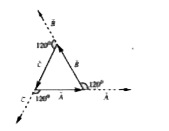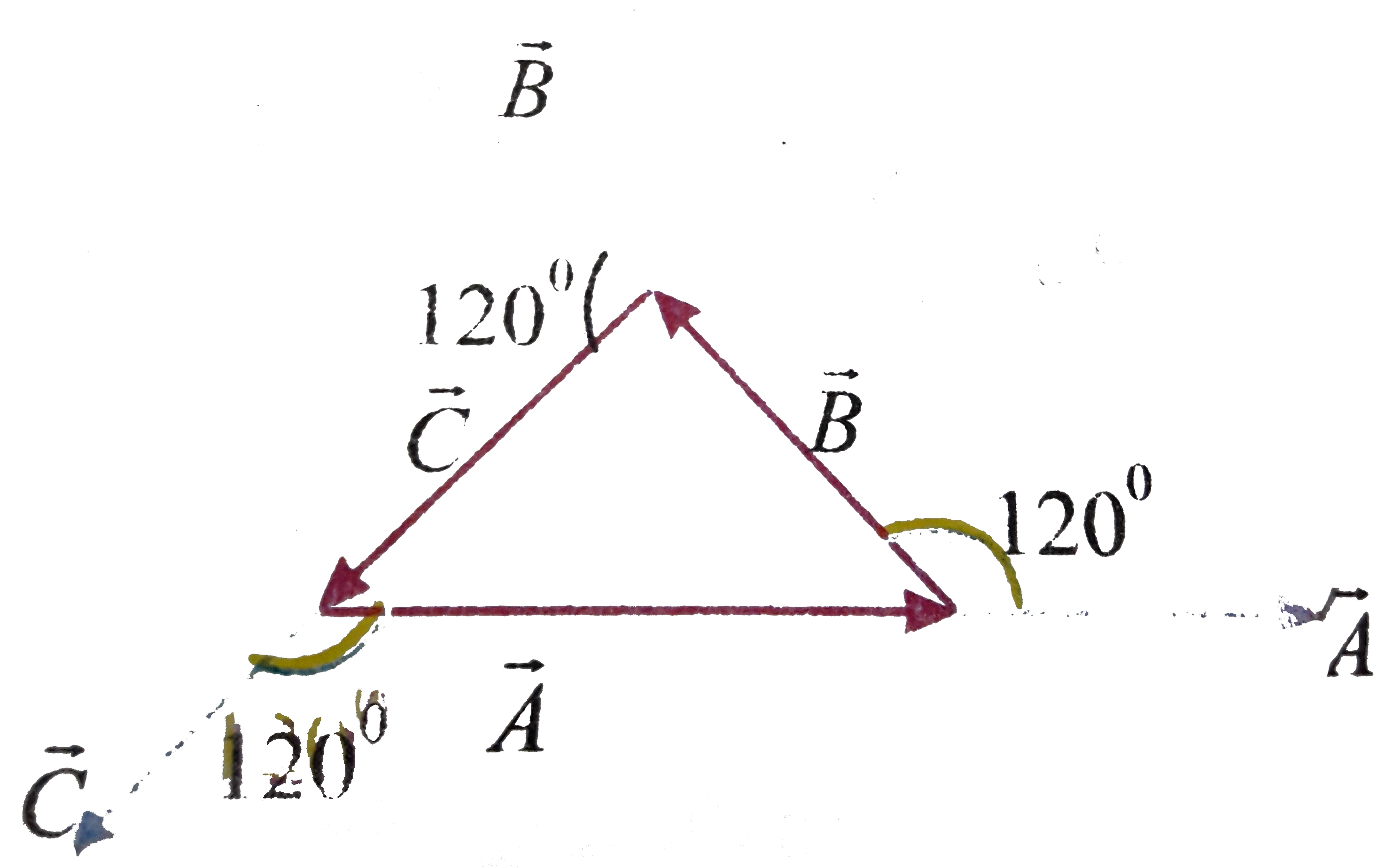If A,B,C represents the three sides of an equilateral triangle taken in the same order then find the angle between i) A and B ii) B and C iii) A and C.
 Solution in Telugu
Solution in Telugu
From the diagram the angle between the vectors A and B is 120°, the angle between B and c is 120°, the angle between A andc is 120°
Topper's Solved these Questions
- BOOK - AAKASH SERIESCHAPTER - MOTION IN A PLANEEXERCISE - SHORT ANSWER TYPE QUESTIONS6videos
MOTION IN A PLANE
- BOOK - AAKASH SERIESCHAPTER - MOTION IN A PLANEEXERCISE - VERY SHORT ANSWER TYPE QUESTIONS10videos
MOTION IN A PLANE
- BOOK - AAKASH SERIESCHAPTER - MOTION IN A PLANEEXERCISE - EXERCISE-3 (Circular Motion)7videos
MOTION IN A PLANE
- BOOK - AAKASH SERIESCHAPTER - MOTION IN A STRAIGHT LINE EXERCISE - very Short answer type question15videos
MOTION IN A STRAIGHT LINE
Similar Questions
Show that the trajectory of an object thrown at certain angle with the horizontal is a parabola .
02:08View SolutionWhat is the acceleration of a projectile at the top of its trajectory ?
02:37View SolutionA particle ‘P is moving in a circle of radius "r" with uniform speed v. AB is the diameter of circle and 'C' is the centre. The angular velocity of P about A and C are in the ratio.
03:04View SolutionGive two examples of the motion of big objects where the object can be treated as a particle and where it cannot be?
06:03View SolutionIf a,b,c be the vectors represented by the sides of a triangle taken in order,then a+b+c=0
02:52View SolutionIf →a, →b, →c represent the sides of a triangle taken in order, then write the value of →a+→b+→c
01:29View SolutionIf →A,→B,→C represents the three sides of an equilateral triangle taken in the same order then find the angle between
(i) →A and →B (ii) →B and →C (iii) →A and →C.
 04:55View Solution
04:55View SolutionIf the roots of the equation c^(2)x^(2)- c(a+b)x + ab =0 are sin A, sin B where A, B and C are the angles and a, b, c are the opposite sides of a triangle, then the triangle is : (i) right angled (ii) acute angled (iii) obtuse angled (iv) sin A + cos A = (a+b)/(c )
02:57View SolutionIf veca, vecb and vecc are represented by three sides of equilateral triangle taken in same order. P.T. veca+vecb+vec c=vec0 .
01:57View SolutionIf a,b,c are sides of an equilateral triangle, the value of ∣∣ ∣∣abcbcacab∣∣ ∣∣ is
06:41View SolutionIf A={1,2,3} B={3,5,6} C={3,4,7}. Find (i) A−(B∪C) (ii) B△C (iii) A△B
04:20View SolutionIf A,B,C represents the three sides of an equilateral triangle taken in the same order then find the angle between i) A and B ii) B and C iii) A and C.
 01:37View Solution
01:37View SolutionFill in the blanks in the following so that each of the following statements is true.
(i) Sides opposite to equal angles of a triangle are .......
(ii) Angle opposite to equal sides of a triangle are .......
(iii) In an equilateral triangle all angles are .......
(iv) In a ABC if ∠A=∠C, then AB= .....
(v) If altitudes CE and BF of a triangle ABC are equal, then AB= ........
(vi) In an isosceles triangle ABC with AB=AC, if BD and CE are its altitudes, then BD is .......... CE.
(vii) In right triangles ABC and DEF, if hypotenuse AB=EF and side AC=DE, then ABC ≅ ....View SolutionIf vec(A), vec(B), vec(C) represents the three sides of an equilateral triangle taken in the same order then find the angle between (i) vec(A) and vec(B) (ii) vec(B) and vec(C) (iii) vec(A) and vec(C) .
05:22View Solutionयदि A,B.Cत्रिभुज के कोण है, तो निम्न में से कौनसा समबाहु त्रिभुज को नहीं दर्शाता है -
03:57View Solution

